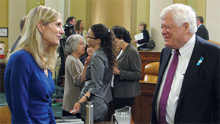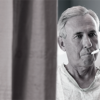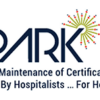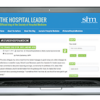Physicians Critical of Proposed Changes to Medicare’s Two-Midnight Rule
In the wake of proposed changes to the Centers for Medicare and Medicaid Services’ two-midnight rule, physicians say new flexibilities and changes to the policy’s auditing mechanism add more uncertainty and ambiguity.
The 2016 Hospital Outpatient Prospective Payment System and Ambulatory Surgical Center Payment System proposed rule was published on July 1, 2015, and included changes in response to concerns about portions of the original two-midnight rule.1 By classifying an inpatient stay as any hospitalization lasting more than two midnights, the rule, which attempted to clarify which services warranted billing under Part B and which qualified for Part A, initially was intended to limit the long observation stays negatively impacting Medicare beneficiaries. However, aggressive reviews by recovery auditors (RAs) and the notion that physician judgment was taking a backseat to arbitrary CMS policy caused a backlash.
In 2014, CMS solicited feedback on the two-midnight rule. SHM suggested a two-tiered approach to address immediate and long-term patient care needs.
“SHM suggests CMS pursue broader solutions to observation status instead of making minor adjustments to the two-midnight rule,” wrote then-SHM President Burke Kealey, MD, SFHM, in a public comment letter to CMS in June 2014. “However, SHM does recognize that in the interim, the two-midnight policy needs to be refined in order to reflect the realities of patient care. Some situations may not be appropriate for classification as outpatient, regardless of the length of stay.”
The proposed changes were supposed to be a solution, but some are saying that CMS has missed the mark. In trying to give physicians more flexibility to determine patient status at the time of admissions, the rule instead may leave physician judgment open to additional scrutiny. Also, the nature of short inpatient stay reviews by Quality Improvement Organizations (QIOs), rather than RAs, remains unclear, and an additional point of concern involves the question of how RAs will factor in.
“My personal opinion is that it will only muddy the waters, in terms of payment for [and] documentation and reviews of short stays for Medicare beneficiaries,” says Jeannine Engel, MD, FACP, in a statement she wrote and shared by email. Dr. Engel is an internist and physician advisor for billing compliance at University of Utah Health Care in Salt Lake City. “No matter who reviews medical documentation, when subjective criteria are used, there is room for interpretation.”
CMS has not defined what constitutes adequate documentation to justify short inpatient stays, nor has it indicated the threshold for “high rates of denials” that would kick reviews over to RAs.
“Details are lacking, and then what makes it even more confusing is what they’ve done with the tweak in policy is further muddied the definition of inpatient,” says Charles Locke, MD, internist and senior physician advisor at Johns Hopkins University School of Medicine in Baltimore. “Whether you agree or disagree with the two-midnight rule, it actually made more clear what inpatient should be.”
According to CMS, the two-midnight rule has reduced observation stays lasting longer than two midnights by 11%, and inpatient admissions are anticipated to increase. But, physicians say, it’s a billing distinction rather than one that impacts patient care.
“The reality is when you take someone in the hospital as outpatient, they can receive every service and care identical to inpatient,” Dr. Locke says. “CMS seems hung up on the idea that in the hospital there are two levels of care.”







